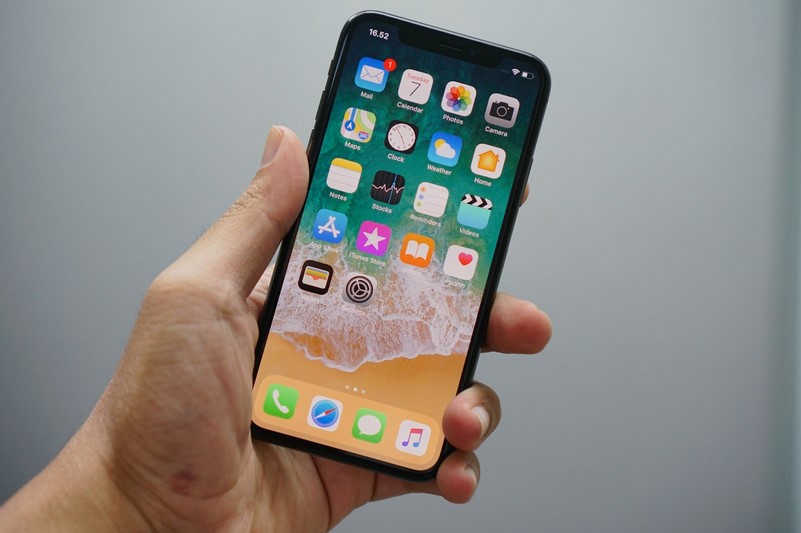7 Tips to Improve iPhone’s Security
Last updated on November 11th, 2024 in Privacy

As an iPhone user, you need to be wary of all the potential dangers online and keep your iPhone’s security. More often than not, people are connected to the internet via cellular data or Wi-Fi.
It’s understandable, given how much we rely on the internet for work, entertainment, and communication. However, leaving our devices open for attackers is hardly a good idea.
There are multiple ways to improve an iPhone’s security. If you want to learn about fortifying your iPhone against potential online threats, look no further than this article.
Start with a virtual private network. In addition to improving online privacy and security, VPNs also let you change your location to access geo-restricted content.
Yet, for the purpose of focusing on security, let’s emphasize the fact that virtual private network services encrypt your internet traffic and change the IP address.
Neither your internet service provider nor malicious actors can see your online activities. VPNs are particularly valuable when you join public Wi-Fi, which is notorious for security holes.
Pro tip: Avoid free VPNs. You might be tempted to save money, but free virtual private networks are known for collecting user data and having security problems.
As a rule of thumb, it is recommended to install the latest version of an operating system regardless of the device.
For one, OS updates add new features and improve overall performance. At the same time, they also add to the device’s security.
iOS developers react to the latest online threats and push hotfixes and larger updates to ensure that iPhone users are safe. Therefore, as soon as you see a notification that the latest iOS update is available, don’t hesitate. Download and install it at your earliest convenience.
Two-factor authentication introduces a secondary security layer to the iPhone. In addition to entering your passcode to access the device, you will also need to enter a temporary code each time.
Setting up 2FA via your Apple ID is relatively simple. Some people find it inconvenient to go through multiple security checks to use an iPhone. On the other hand, such a small thing should not be a concern given how much of a security boost it offers.
Mail tracking is one of those things an average person is unfamiliar with. Some emails come with a tracking feature that tells whether the recipient has opened an email. Moreover, the tracking also offers a vague location of the recipient.
Usually, email tracking is a trick used by various marketing companies to learn more about a targeted demographic. Still, for the sake of security, you should eliminate the potential threat.
If you use Apple’s Mail app, go to Settings, open Mail, and navigate to the Privacy Protection tab. Here, enable Protect Mail Activity.
Your iPhone should have at least one lock to prevent strangers from using the device. Even in the case of a theft, the thief will have a much harder time accessing the information or wiping the data completely to then sell the smartphone.
Touch ID or Face ID are solid options as far as security goes. However, there may be circumstances when somebody takes the iPhone from you and cracks it with your fingerprints. Another scenario is when you pass out, and they use your hand. Sure, such scenarios are rare, but they occur nonetheless.
A passcode is often the go-to option. Creating a dedicated password that only you know works. Even if somebody gets their hands on your iPhone, they will struggle to open it without a passcode.
To set up a passcode, open the iPhone’s Settings and scroll down to the dedicated tab for Touch/Face ID and Passcode.
You must have noticed how each application you install asks for permissions. Unaware users pay no heed and simply agree to everything to move on and launch an application to use it.
Such behavior is the opposite of what you should be doing to ensure security and privacy on an iPhone. Read through each prompt carefully and decline requests if they indicate potential problems.
To be safe, go to Settings and open the Privacy & Security tab. Open each app and change its permission settings manually. Most, if not all, applications don’t require knowing your exact location. You are only exposing yourself by leaving the setting enabled.
Data backups are not a direct way to fend off cybersecurity threats. Instead, they provide a solution if something happens to your iPhone’s data.
The most common method to back up iPhone data is to use iCloud. The default plan offers 5GB of free space with an option to expand it by paying a small monthly or yearly fee.
The second option is to copy and paste iPhone files to another device, such as your computer. It means cluttering the computer’s drive, but that should not cause too many issues. Before you commit to backing up iPhone data, make sure to get rid of redundant files, such as media duplicates.
Also, for smaller bits of information, such as text documents, you can learn how to copy and paste on iPhone or from an iPhone to another Apple device like an iPad. Copying text information like your login credentials to a password manager, for instance, might come in handy.
All in all, digital privacy and security should be a priority, particularly if you spend a lot of time on the internet.
Make the most out of the tips mentioned in this article and create an environment in which you feel safe using your iPhone.